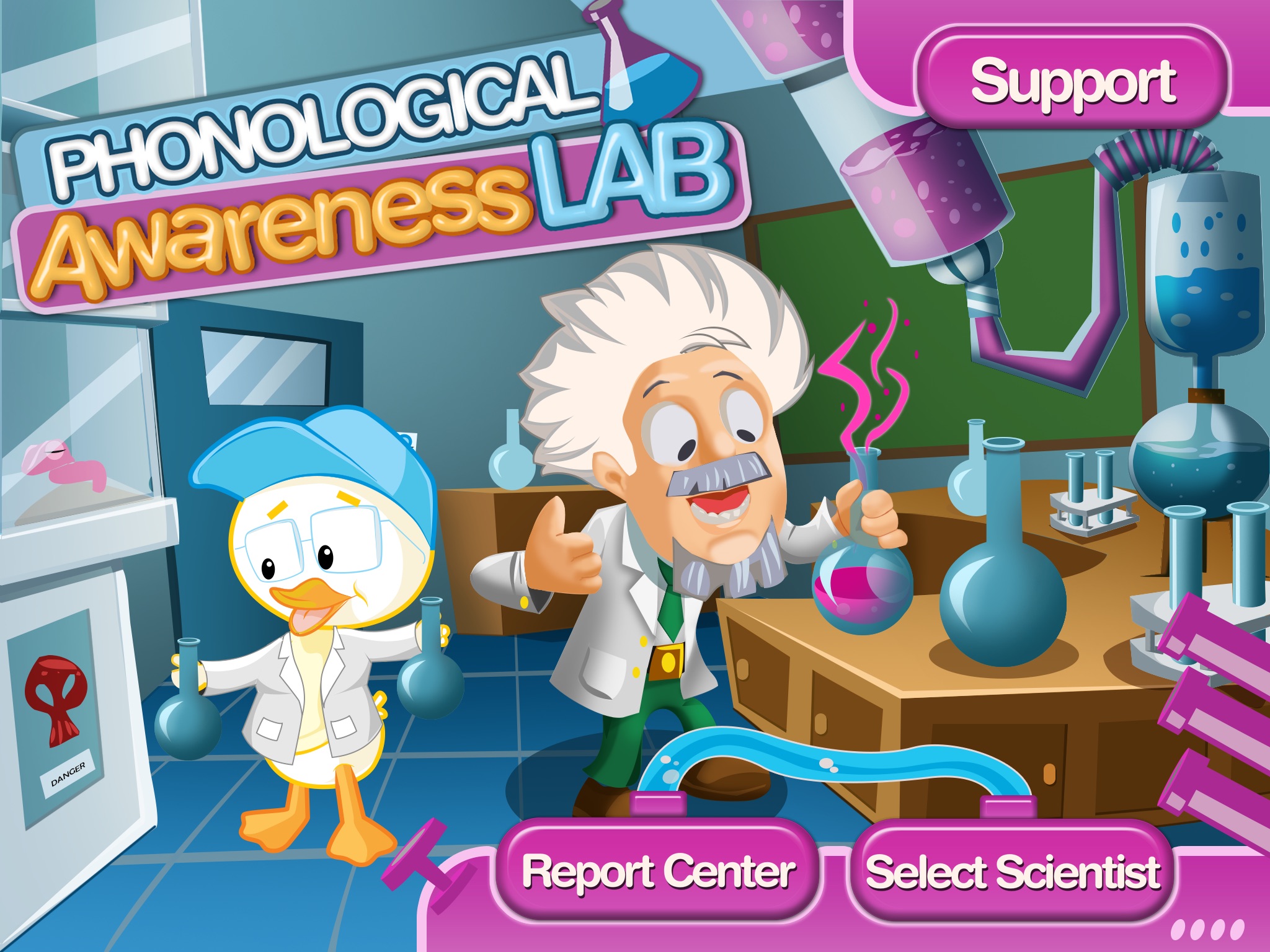
Phonological Awareness Lab
Phonological Awareness Lab (PAL) is a fun, multi-level game specifically designed to improve phonological awareness in children. Designed by a certified speech-language pathologist, PAL incorporates a fun science lab theme to encourage children to demonstrate their phonological awareness.
Created to help teach phonological awareness, PAL incorporates four (4) “labs” to target the essential phonological awareness skills needed for reading.
• The Sentence Experiment Lab
• The Decoding Room
• The Rhyming Compound
• The Syllable X-Ray
Inside the Decoding Room and Rhyming Compound are multiple levels of activities including blending syllables, blending sounds, rhyming identification, rhyming selection, and rhyming match. The fun animations within each area make learning these skills fun and engaging.
Multi-player
Recognizing the need for small group work, Phonological Awareness Lab is designed to be used with a single player or multiple players. A tap on the add player button displays a pop-up screen. The user types the student’s name and enters the player’s photo or a stock avatar. Player information can be easily edited if needed.
Data Compilation
Data compilation is a critical element for the busy speech-language pathologist. PAL compiles the data tracked for each task into a “report card” for each student. This report card is located in the Report Center and is available to be exported to the free Therapy Report Center or emailed. Each session report lists the date, activity, and accuracy. Each report card includes an easy-to-read graph to aid progress monitoring.
PAL and Response to Intervention
Phonological awareness skills are critical for reading (Carson, et al, 2013; Hogan, et al, 2005; Power-deFur, 1998). The data compilation for individual students kept over time, makes Phonological Awareness Lab perfect to use with Response to Intervention (RTI). Students who receive phonological awareness instruction often have superior reading skills. In addition, children who receive phonological awareness training have significantly fewer decoding difficulties (Carson, et al, 2013). To aid in the intervention plan, PAL includes an easy to read data report detailing the number of sessions, the activities targeted, and the accuracy. Easy-to-read graphs present a visual for each activity to ensure easy progress monitoring.
Features
Phonological Awareness Lab includes the following features:
1) Multiple player capability
2) Four different elements of phonological awareness
3) Seven tasks of varying complexity
4) Customization
5) Data compilation
6) Fun and engaging animations
7) Visual and auditory feedback for correct/incorrect responses
8) High quality images
Sources:
Carson, K, Gillon, G., Boustead, T. (2013). Literacy outcomes in the first year of school. Language, Speech, and Hearing Services in Schools, April 2013, Vol. 44, 147-160. doi:10.1044/0161-1461(2012/11-0061)
Hogan, T., Catts, H., and Little, T. (2005). The relationship between phonological awareness and reading. Language, Speech, and Hearing Services in Schools, October 2005, Vol. 36, 285-293. doi:10.1044/0161-1461(2005/029)
Power-deFur, Lissa. (1998). Language, phonological awareness and reading success. SIG 11 Perspectives on Administration and Supervision, October 1998, Vol. 8, 13-14. doi:10.1044/aas8.2.13



